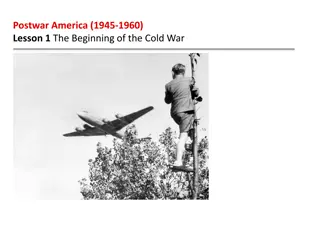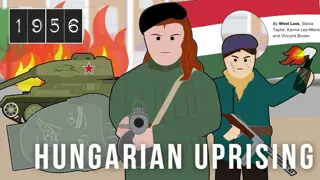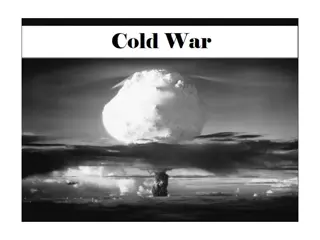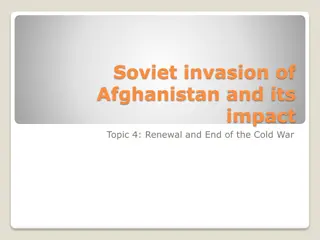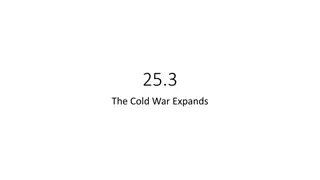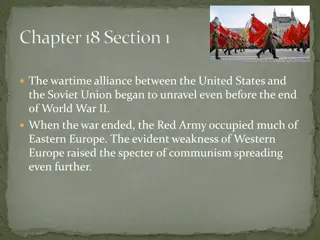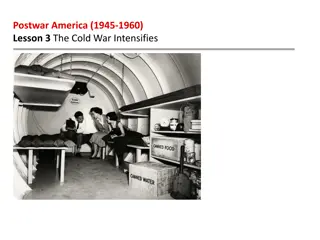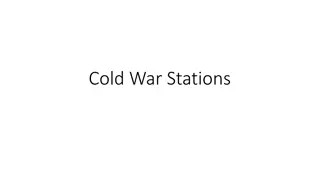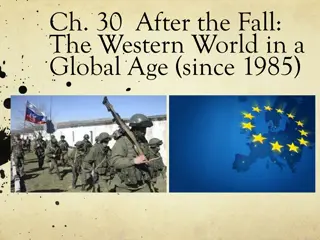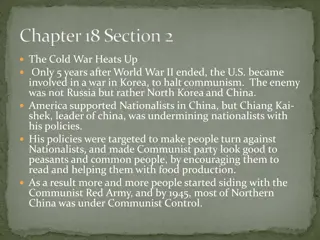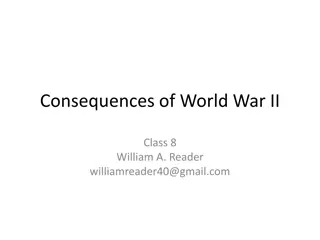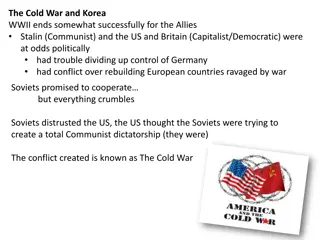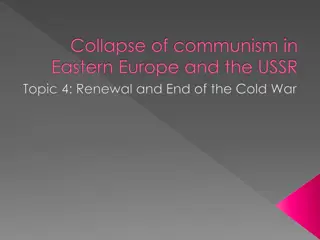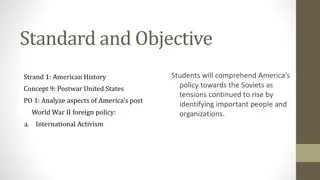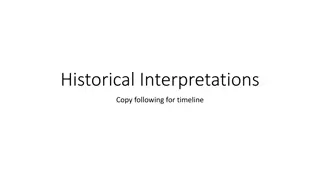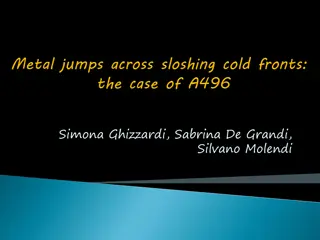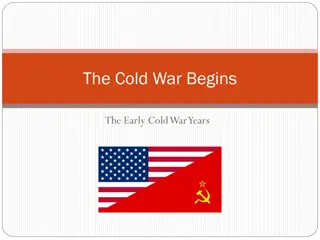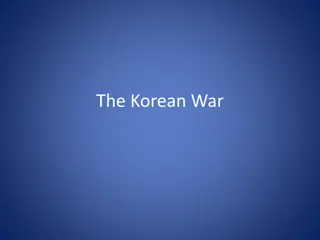The Origins of the Cold War and U.S.-Soviet Antagonism
Amid post-World War II developments and contrasting ideologies, the Cold War emerged, marked by Yalta and Potsdam Conferences, the Truman Doctrine, the Marshall Plan, the Berlin Blockade, NATO's formation, and more. Various perspectives exist on the roots of U.S.-Soviet tensions, with the Soviet vision aiming to control Eastern Europe, weaken Germany, and extend influence opportunistically elsewhere.
Download Presentation

Please find below an Image/Link to download the presentation.
The content on the website is provided AS IS for your information and personal use only. It may not be sold, licensed, or shared on other websites without obtaining consent from the author. Download presentation by click this link. If you encounter any issues during the download, it is possible that the publisher has removed the file from their server.
E N D
Presentation Transcript
The Origins of the Cold War Mark Lawrence Lyndon B. Johnson Presidential Library University of Texas at Austin
No, we do not need to fear Russia. We need to learn to work with her against our common enemy, Hitler. We need to learn to work with her in the world after the war. For Russia is a dynamic country, a vital new society, a force that cannot be bypassed in any future world. -- Wendell L. Willkie, One World (1943)
At the present moment in world history nearly every nation must choose between alternative ways of life. The choice is too often not a free one. One way of life is based upon the will of the majority, and is distinguished by free institutions, representative government, free elections, guarantees of individual liberty, freedom of speech and religion, and freedom from political oppression. The second way of life is based upon the will of a minority forcibly imposed upon the majority. It relies upon terror and oppression, a controlled press and radio; fixed elections, and the suppression of personal freedoms. -- Harry Truman, March 1947
Tensions escalate February & July 1945: Conferences at Yalta and Potsdam March 1946: Churchill s Iron Curtain speech March 1947: Truman Doctrine speech June 1947: Marshall Plan announced February 1948: Communist coup in Czechoslovakia June 1948: Berlin blockade begins April 1949: NATO established August 1949: Soviet atomic test October 1949: communist victory in China June 1950: outbreak of war in Korea
Explaining the U.S.-Soviet Antagonism: Three schools of thought 1. Orthodox: Soviet responsibility 2. Revisionist: U.S. responsibility 3. Post-revisionist: irreconcilable visions of the future
The Soviet vision 1. Control Eastern Europe 2. Weaken Germany 3. Cooperation if possible, confrontation if necessary to achieve 1 and 2 4. Opportunism elsewhere to extend Soviet influence
The U.S. vision 1. American leadership 2. Open world economic order 3. Decolonization 4. Collective security
Points of Contention 1. Status of Eastern Europe 2. Status of Germany
Irritants 1. Long-standing anticommunism 2. Wartime tensions 3. Atomic weapons
Globalization of the Cold War 1. Soviet probing around periphery 2. End of the Chinese civil war 3. Anti-colonial uprisings 4. Surging anti-communist in the US


